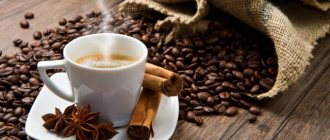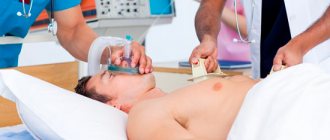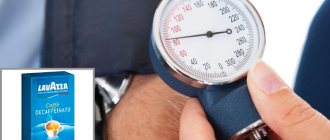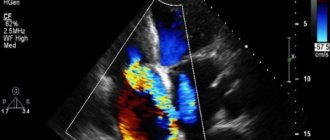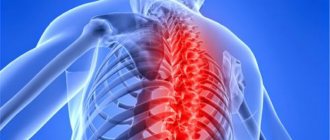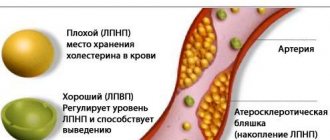Home » Arrhythmia
Category: Arrhythmia
An accumulation of accumulated problems at any time can become the onset of a disease, and proper nutrition and diet for arrhythmia can strengthen human health in general, and the heart muscle in particular.
Signs of heart disease
- Uneven and strong heartbeat;
- Trembling in the limbs;
- Heaviness in the chest when running and lifting;
- Profuse sweating;
- Intermittent breathing associated with lack of air;
- Dark circles before the eyes;
- Heaviness in the chest and dizziness.
The causes of the disease can be not only stress, but also the thyroid gland, anemia (low hemoglobin), infection, hypertension and coronary artery disease, and inflammatory processes.
If such disorders occur, first of all consult a doctor and reconsider not only your view on nutrition during arrhythmia.
- Prevention of arrhythmia with proper nutrition
- Types of diets for atrial fibrillation
- Nutrition
- Folk diet
- Herbal tea
- Vinegar diet
Principles of nutrition for arrhythmia
Attention! The main danger of atrial fibrillation or atrial fibrillation is the formation of a blood clot in the heart cavity. To prevent serious consequences, doctors recommend eating right.
One of the causes of arrhythmia is a shift in electrolyte metabolism. At the molecular level, the health of the heart and blood vessels rests on 3 pillars - potassium, magnesium, calcium. A lack of these minerals in the heart muscle leads to rhythm disturbances even in healthy people.
That is why nutrition is based on a diet containing sufficient amounts of vitamins, minerals and blood thinning components.
With atrial fibrillation, the diet should be balanced. The diet consists of 60% plant foods. At the same time, carbohydrates make up a third, fats less than 30, and proteins – 20% of the diet.
Cooked dishes without excess table salt should not overstimulate the nervous system. The energy value of food per day is 2700–3000 kcal.
General advice for patients:
- It is recommended to eat 4-6 times a day so as not to overload the heart.
- You should sit down at the table feeling hungry. If you are not hungry, you should wait.
- Overeating is contraindicated for patients, because an overfilled stomach puts pressure on the heart.
- Food should not be cold or too hot.
- If you are obese, it is recommended to eat salads before meals. By filling the stomach, they create a feeling of fullness, which allows you to eat less high-calorie food.
- You should not eat before going to bed, or in an excited state.
The method of preparing food is also important in the diet for atrial fibrillation. Nutritionists recommend steaming, boiling or baking food. But fried foods are prohibited because the cooking process creates excess cholesterol.
When creating a menu, you should not torture yourself with hunger or go on a strict diet. This will not bring any benefit, but will only worsen the arrhythmia.
Features for women and men
The principles of organizing proper nutrition are the same for men and women, however, when preparing a diet, it is necessary to take into account some physiological differences.
Women have an increased need for iron (especially during menstruation). Its main supplier is red meat. Iodine plays an important role in ensuring the normal functioning of the endocrine system.
You should pay attention to seafood, sea fish and feijoa fruits. Calcium is essential for bone structures. It is important to maintain a high level of B vitamins. The daily calorie requirement for the female body is 2300-2500 kcal.
The male body is characterized by more active metabolic processes. Maintaining muscle mass requires a steady supply of protein. Zinc is very important for men. It comes from seafood, carrots, nuts, pumpkin seeds, and beef. Fiber is necessary for normal bowel function. The daily caloric intake for men is 2700-2900 kcal.
In addition, when developing a diet, it is important to take into account gender differences in nutritional psychology. A woman needs variety in the menu, while men are more indifferent to this. For a woman, the taste and aromas of products and external perception are more important.
What the heart loves
Eating low-fat foods is recommended by cardiologists.
Fresh vegetables and fruits, seafood, dairy products are rich in microelements:
- Potassium, necessary for heart contraction, is found in bananas, black currants, parsley and potatoes, especially baked or boiled in their jackets. A lot of K is found in dried apricots, raisins, prunes, cabbage, and sunflower seeds.
- Magnesium is an essential mineral for proper heart function. There is a lot of Mg in oatmeal and buckwheat, fresh cucumbers. Walnuts, hazelnuts, pistachios, cashews, and peanuts contain large amounts of the element. Mg is also found in hake fish, spinach and legumes - beans, lentils, peas. Magnesium is found in yeast, bran, and avocados.
- Dietary fermented milk products with low 3% fat content - kefir, cottage cheese, fermented baked milk - are rich in calcium. Hard cheeses contain calcium. Some vegetables contain high amounts of Ca - cauliflower, artichokes.
By the way! Calcium is not absorbed from low-fat sources, since it is absorbed only along with vitamin D, which is a fat-soluble substance.
- The diet includes sprouted wheat, honey, garlic.
Nutrition for arrhythmia should be varied. In addition to the above mentioned healthy products, the menu also consists of poultry and sea fish. Bread products labeled “Whole Grain” are preferred.
Such products contain a full range of vitamins and minerals. An alternative is to add bran to any dish.
Heart rhythm disturbances in the form of blockade are often encountered. It is characterized by a slowing of the rhythm to varying degrees. Rare heartbeat develops more often with poisoning with glycosides, β-blockers, Clonidine, Verapamil. The diet for the treatment of blockade consists of foods containing a lot of potassium.
A balanced diet is a real path to recovery for patients with arrhythmia.
Sample menu for the week
The best solution for cardiac arrhythmia is only healthy nutrition, taking into account contraindications. Nutrition for cardiac arrhythmia has a certain regimen. It should include eating five times a day, in small portions. For convenience, you can make a table for the week with your food preferences.
| Menu for the week | ||
| Monday | Breakfast | Buckwheat porridge with low-fat milk. Green tea with a piece of sugar. |
| Snack | Baked apple with honey or cottage cheese. | |
| Dinner | Soup with vegetable or chicken broth. For the second course - steamed cutlets with vegetables. Compote of fresh fruits or dried fruits. | |
| Snack | Any fruit. | |
| Dinner | Boiled chicken, fermented baked milk, vegetable salad. | |
| Tuesday | Breakfast | Porridge with oatmeal that requires cooking. |
| Snack | Yogurt. | |
| Dinner | Vegetable or fish soup. Chicken. Green tea. | |
| Snack | Low fat cottage cheese with the addition of fruits or berries. | |
| Dinner | Baked low-fat fish, vegetables. A glass of kefir. | |
| Wednesday | Breakfast | Cottage cheese casserole, green tea. |
| Snack | Any fruit or nuts. | |
| Dinner | Borscht, turkey, pearl barley porridge. | |
| Snack | Fruit jelly. | |
| Dinner | Steamed cutlets with pasta. Yogurt. | |
| Thursday | Breakfast | Porridge with oatmeal. Green tea. |
| Snack | Fruit or nuts. | |
| Dinner | Soup with buckwheat. Vegetable salad and fish. | |
| Snack | Yogurt. | |
| Dinner | Stewed cabbage with low-fat meat. | |
| Friday | Breakfast | Buckwheat porridge. Green tea or compote. |
| Snack | Fruit. | |
| Dinner | Soup with vegetable or fish broth. Baked potatoes. Dried fruits compote. | |
| Snack | Casserole with cottage cheese. Rosehip tea or decoction. Stew with pasta. | |
| Dinner | Pumpkin porridge and a glass of low-fat kefir. | |
| Saturday | Breakfast | Steamed omelette and tea with a piece of sugar or a spoonful of honey. |
| Snack | Yogurt. | |
| Dinner | Soup with vegetables. Buckwheat porridge and meat. | |
| Snack | Fruits. | |
| Dinner | Pearl barley with steam cutlet. Compote. | |
| Sunday | Breakfast | Buckwheat porridge. Compote with dried fruits. |
| Snack | Fruit or nuts. | |
| Dinner | Borsch. Steamed cutlets from lean meats, pasta. | |
| Snack | Yogurt. | |
| Dinner | Vegetable salad. Baked fish. Tea. | |
A treatment table for people with heart disease should not contain a lot of salt. Green and black tea are replaced with a drink with chamomile, lemon balm or other medicinal herbs. If you are not allergic to honey, add it to porridge and yogurt. If you have heart arrhythmia, you need to eat only healthy foods. Your diet should include fruits and vegetables every day.
Patients with myocardial pathology must competently approach the selection of dishes to compile their weekly menu. Only the content of a balanced amount of useful substances will strengthen the heart muscle and relieve stress on it. Eating healthy will relieve heaviness in the stomach and help you gradually lose weight.
Prohibited Products
In addition to healthy dishes, there is a list of harmful foods that should not be consumed if you have angina and arrhythmia. They increase the excitability of the cardiac conduction system, increase blood pressure, and reduce the effectiveness of medications.
The following are prohibited:
- Fatty foods contain a lot of cholesterol, so they are contraindicated for age, as well as for arrhythmia. You should not consume dairy products or high-fat meats. You will have to give up lard, smoked sausage and pork ribs. It is recommended to limit fatty fish such as mackerel. It is better to replace it with hake, which contains magnesium.
- Do not eat spicy foods, spices, or pickles containing vinegar and rock salt. They only whet the appetite and encourage the consumption of large amounts of liquid, which overloads the heart.
- Fast food is the main cause of obesity in large cities. Baking promotes the deposition of atherosclerotic plaques in blood vessels. When snacking, it is better to eat bananas, apples, and nuts.
- It is forbidden to drink coffee, strongly brewed tea, or energy drinks. These products increase heart rate and provoke the development of arrhythmia.
- Fried foods contain a lot of cholesterol and are therefore prohibited for heart disease.
- Alcohol, which causes myocardial ischemia, is extremely harmful for arrhythmia.
Chocolate, sweets and cakes saturated with sugar are subject to restrictions in the diet of heart patients. Ice cream is also harmful because it is too cold and sweet.
Advice! Compliance with these measures will prevent the complication of the disease in the form of a dangerous rhythm disorder - ventricular fibrillation.
Drinking regime
In heart patients, the legs are prone to swelling. Therefore, water consumption is limited to 1.5 liters per day. You should drink clean water, including mineral water from Narzan and Essentuki, enriched with microelements. It is useful to brew green tea. It contains antioxidants necessary for the prevention of heart and vascular diseases.
Herbal teas made from dried berries or rose hips are recommended for atrial fibrillation. It is better to prepare the drink in a thermos in the evening. For 3 glasses of boiled water, cooled to 90° C, you need to add 1 tbsp. l. flowers of hawthorn and rose hips. After infusion and straining, it should be consumed throughout the day.
Tea made from calendula flowers, mint leaves, oregano, and thyme is beneficial. Herbal infusions help improve cardiac activity and relieve nervous tension.
Cardiologists recommend preparing a drink from apple cider vinegar to thin the blood and prevent blood clots. The product, which has medicinal properties, is diluted with warm water and honey. The drink is consumed half an hour before meals for 2 weeks. The course of treatment is repeated 2 times a year.
Recipes
African omelette
You can prepare many variations of omelet from permitted products
. Preparation:
- peel and boil 300 g of carrots until soft, and then grind in a blender to a puree consistency (or rub it through a strainer);
- beat 2 eggs and mix them with 200 ml of milk;
- add 2 tbsp to the egg-milk mixture. l. grated hard cheese;
- Carefully add 1 tbsp here while stirring. l. flour, 1 tbsp. l. orange juice;
- mix the resulting mixture with carrot puree;
- add 1 tbsp to the mixture. l. softened butter, stir;
- Pour the resulting mixture into the mold and steam the omelette.
Vegetable casserole
Preparation:
- Divide the cauliflower into inflorescences, boil them for 7 minutes;
- beat 2 eggs with 200 ml of milk and a pinch of salt;
- grate 200 g of hard cheese using a fine grater;
- Place cauliflower inflorescences cut in half on a baking sheet greased with oil and sprinkled with breadcrumbs, pour them with the egg-milk mixture;
- sprinkle grated cheese on top;
- Place the baking sheet in the oven and bake for half an hour at 180°C.
Vegetable salad
Preparation:
- wash and boil 300 g of cauliflower inflorescences, let them cool;
- hard boil 2 eggs;
- wash and cut cucumber, apple, eggs and tomato into small cubes;
- chop 2 lettuce leaves;
- place all components in a salad bowl;
- add 3 tbsp to the salad. l. sour cream, mix well.
Pumpkin porridge
Preparation:
- Peel the bright orange pumpkin from the peel and seeds;
- cut 250 g of pumpkin into pieces approximately 2x2 cm in size;
- pour half a glass of goat or cow's milk into a saucepan and place over medium heat;
- When the milk boils, add pumpkin to it;
- add a pinch of salt, sugar to taste and 0.5 tsp. cinnamon;
- Cook the porridge for 20 minutes while stirring (until the pumpkin is soft);
- grind the porridge with a blender and add 30 g of butter;
- When serving, sprinkle the porridge with pieces of fruit.
